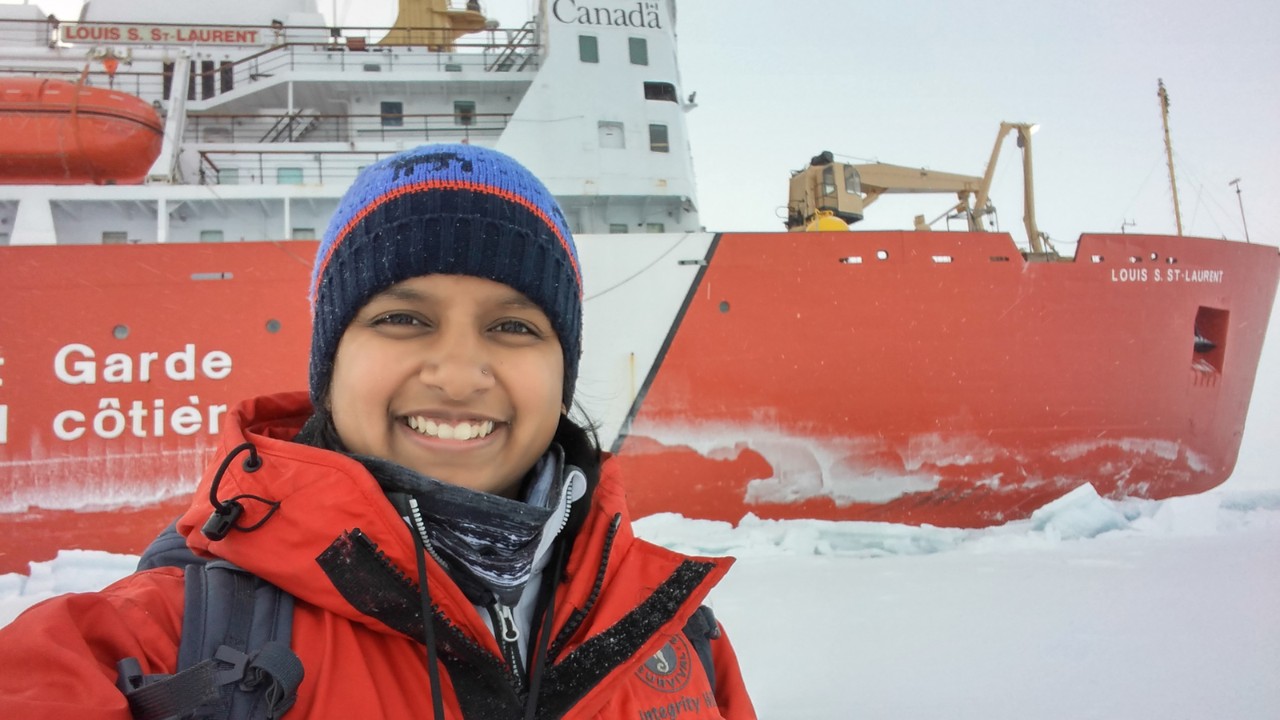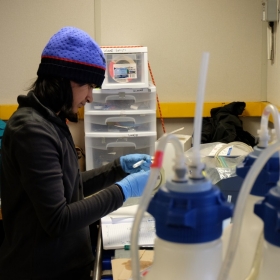“Whenever we talk about bacteria, it’s always pathogens and the scary stuff, but we don’t spend that much time thinking about all the good ecosystem services they provide,” Ramachandran says. “Ninety per cent of the biomass is bacterial, so I wanted to learn more about it.”
That interest eventually led to her doing a PhD at Concordia focused on a group of bacteria called methylophilaceae. These bacteria have a long evolutionary history of existing in both freshwater and marine environments. Ramachandran has been looking for them in the Arctic Ocean to see what evolutionary changes they’ve undergone that are associated with the rapidly changing environmental conditions there.
As for why she decided to stay at Concordia for her graduate work, she says it had a lot do with her PhD supervisor, David Walsh, associate professor in the Department of Biology and Canada Research Chair in Microbial Biology and Genomics, and the opportunities his lab provided.
“For grad school, a lot of emphasis is on where you go, but I think it’s important that you click well with your supervisors and are working on a project that you’re really passionate about,” she says.
From the lab to the Arctic
Ramachandran’s passion project took her all the way to the Arctic on three research expeditions. Two were aboard the Canadian Coast Guard’s largest icebreaker, the Louis S. St-Laurent. The third was to the Canadian High Arctic Research Station in Cambridge Bay, Nunavut.
Not only did Ramachandran get to witness the impacts of climate change on those trips, but in Nunavut she got to hear about them directly from locals.
“I met different people who told me about how the migrations of animals like muskox and caribou have changed, how hunting seasons have changed, how their ability to go out on the ice safely has changed,” she says. “And, of course, there are also issues with permafrost thawing, which causes issues with houses and structural support.”
Ramachandran’s goal now is to use her marine science background to help decision makers support people as they deal with these rapid changes. She has done some of that as a policy analyst with the federal government, but she wants do more — perhaps with an international organization.
“These aren’t issues limited to national borders,” she says. “To be able to work with people in the north from different countries, backgrounds, areas of expertise and ways of knowing is really key to coming up with solutions to the climate crisis.”
 Arthi Ramachandran, BSc 14, travelled aboard the Canadian Coast Guard’s largest icebreaker, the Louis S. St-Laurent, on two research expeditions to the Arctic.
Arthi Ramachandran, BSc 14, travelled aboard the Canadian Coast Guard’s largest icebreaker, the Louis S. St-Laurent, on two research expeditions to the Arctic.
 Arthi Ramachandran, BSc 14, collects bacterial cells from Arctic Ocean water for her PhD research.
Arthi Ramachandran, BSc 14, collects bacterial cells from Arctic Ocean water for her PhD research.